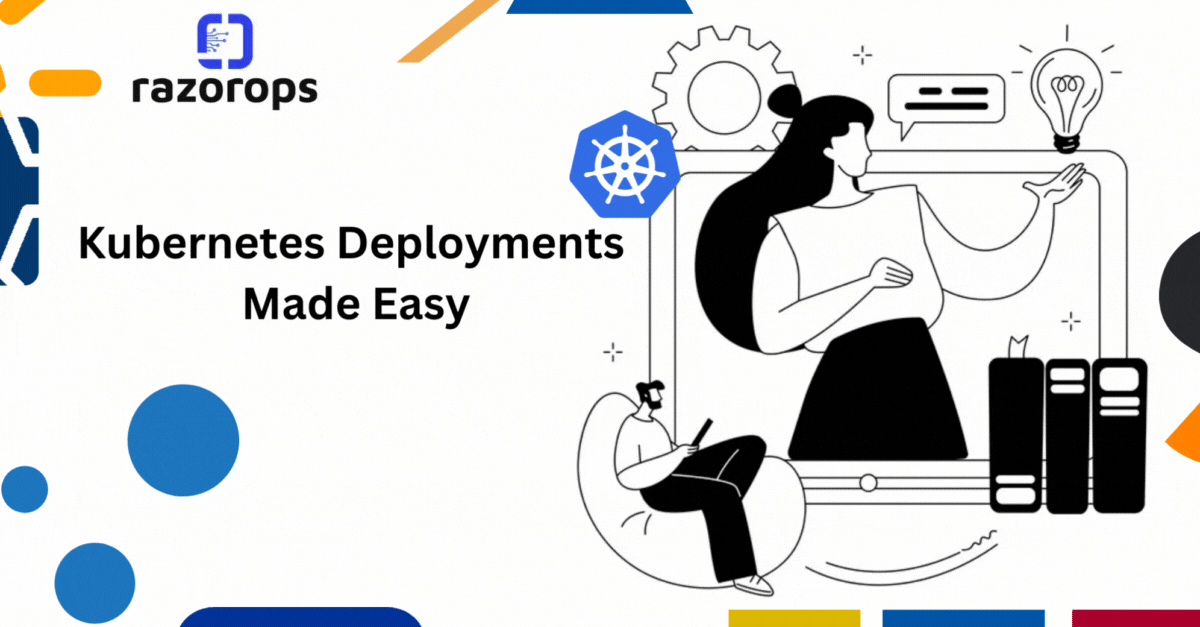
Kubernetes Deployments Made Easy
Deploying applications on Kubernetes doesn’t have to be an ordeal. With the right approach and understanding, you can streamline the process and harness the full power of Kubernetes to manage your applications effortlessly. Let’s delve into some strategies and best practices to simplify Kubernetes deployments.
Understanding Kubernetes Deployments
At its core, Kubernetes is all about managing containerized applications. A Deployment in Kubernetes is a resource object that defines the desired state for your application. It handles creating and updating instances of your application, ensuring they match the specified configuration.
Pods:
Pods are the smallest deployable units in Kubernetes, representing one or more containers that are tightly coupled and share the same network namespace.
ReplicaSets:
ReplicaSets ensure that a specified number of replicas (identical copies) of a pod are running at all times. This aids in high availability and scalability.
Deployments:
Deployments provide declarative updates to applications. They allow you to describe the desired state for your application, including which version of your app to run.
Simplifying Deployments
1. Declarative Configuration
Embrace the declarative nature of Kubernetes. Define the desired state of your application in YAML files. This simplifies management and ensures consistency.
2. Utilize Helm Charts
Helm, the Kubernetes package manager, offers Helm Charts—a convenient way to define, install, and manage Kubernetes applications. Leverage Helm Charts to encapsulate complex application configurations.
3. Automation with CI/CD
Integrate your deployment workflow with Continuous Integration/Continuous Deployment (CI/CD) pipelines. Tools like Jenkins, GitLab CI/CD, or Argo CD automate the build, test, and deployment process.
4. Health Probes and Readiness Checks
Define health probes and readiness checks in your application manifests. Kubernetes uses these to determine when your application is ready to accept traffic, enhancing reliability.
5. Resource Limits and Requests
Specify resource limits and requests for your containers. This helps Kubernetes efficiently allocate resources and prevents one application from monopolizing resources.
Best Practices
1. Rolling Updates and Rollbacks
Leverage Kubernetes’ native support for rolling updates. This allows you to update your application without downtime and roll back to a previous version if issues arise.
2. Namespaces and Labels
Organize your resources using namespaces and labels. This aids in managing and segregating different components of your application.
3. Secrets and ConfigMaps
Use Kubernetes Secrets and ConfigMaps to manage sensitive information and configuration data separately from your application code.
4. Monitoring and Logging
Implement robust monitoring and logging solutions. Tools like Prometheus for monitoring and ELK Stack for logging provide insights into application health and performance.
Kubernetes deployments can be made manageable by adopting best practices, utilizing automation, and understanding the core concepts. By embracing declarative configurations, automation, and best practices, you can streamline your deployment workflow and make managing applications on Kubernetes a hassle-free experience.
Tutorials & Guides
Top Reading Recommendations
Container Orchestration Comparison on Stackify
Upcoming Events
Speaker Session : Google DevFest AI’ 23 Lahore
Dec 9 -10:30 AM – 2:15 PM (PST)
Keptn New Contributor Meeting
Dec 11- 9:00 – 9:45 PM (PST)
Cloud Native Prague #8
Dec 11 - 10:00 PM – Dec 12, 2:30 AM (PST)
DevOps Jobs
Google - Check out all the jobs
here
Accenture -Check out all the jobs here
Infosys -Check out all the jobs here
Microsoft -Check out all the jobs
here

PS- We publish this newsletters every week, Subscribe and share with your friends. We hope this newsletter has provided valuable information. Follow RazorOps Linkedin Page Razorops, Inc.





